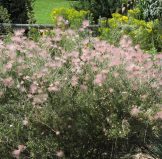
Every garden should include some spring-blooming bulbs. And some fall-blooming bulbs as well. “But” you say – “my entire garden is devoted to native plants to support native pollinators and other native critters; and hyacinths, crocus, tulips and daffodils are not even native to the North American continent”.
While growing an all-native garden is a great idea, and supporting our local ecosystems is an important endeavor, there are good reasons for including some non-native plants, especially plants that extend the flowering season at either end. They will attract and support honeybees, bumblebees, mason bees, and other pollinating insects at times of the year when flowers are relatively scarce.
If deer roam in your yard, we offer a lovely assortment of highly deer-resistant (toxic to deer) spring-flowering Narcissus (daffodils) that span from early to late spring, in many sizes and color combos, some of them quite fragrant. [Read More]

 I have a passion for seeds, for the elegant and endlessly diverse designs of their natural packaging, their fascinating distribution and germination strategies, and for the astonishing emergence of exuberant life from even the most minute speck of a seed. I once grew a Eucalyptus gunnii tree from seed the size of a dust mote. It grew, outdoors (in Eugene, Oregon) for several years, reaching 16’ tall until an unusually heavy snowstorm broke all the branches off. And in its native Tasmania it could have reached 135 feet! In addition to collecting seeds from plants in the wild and in my pollinator garden at home, I collect seeds at this time of year from my vegetable garden to enable Harlequin’s Gardens to offer unique and commercially unavailable varieties of tomatoes (“Anasazi”) and peppers (Lanterna Piccante), wild perennial arugula, and perennial Caucasian Spinach vine.
I have a passion for seeds, for the elegant and endlessly diverse designs of their natural packaging, their fascinating distribution and germination strategies, and for the astonishing emergence of exuberant life from even the most minute speck of a seed. I once grew a Eucalyptus gunnii tree from seed the size of a dust mote. It grew, outdoors (in Eugene, Oregon) for several years, reaching 16’ tall until an unusually heavy snowstorm broke all the branches off. And in its native Tasmania it could have reached 135 feet! In addition to collecting seeds from plants in the wild and in my pollinator garden at home, I collect seeds at this time of year from my vegetable garden to enable Harlequin’s Gardens to offer unique and commercially unavailable varieties of tomatoes (“Anasazi”) and peppers (Lanterna Piccante), wild perennial arugula, and perennial Caucasian Spinach vine.


 In the late 1800s Colorado was one of the top apple-growing states in the country. Many of these ancient apple trees still exist, and together with trees planted this century, are producing more fruit than homeowners alone can harvest.
In the late 1800s Colorado was one of the top apple-growing states in the country. Many of these ancient apple trees still exist, and together with trees planted this century, are producing more fruit than homeowners alone can harvest. Sometimes we are running so fast that we forget to slow down and see what’s ready to come out for sale. This week we are happily surprised to see that we have fresh stock of lots of premium native shrubs that we grew in convenient, affordable 2-gallon pots. We’re making them available at regular price (not discounted for our fall sale) – read more below.
Sometimes we are running so fast that we forget to slow down and see what’s ready to come out for sale. This week we are happily surprised to see that we have fresh stock of lots of premium native shrubs that we grew in convenient, affordable 2-gallon pots. We’re making them available at regular price (not discounted for our fall sale) – read more below. One of the beautiful alternatives to a standard, water-thirsty, solid green, mowed Kentucky Bluegrass lawn is a naturalistic meadow composed of low-water clumping grasses and wildflowers.
One of the beautiful alternatives to a standard, water-thirsty, solid green, mowed Kentucky Bluegrass lawn is a naturalistic meadow composed of low-water clumping grasses and wildflowers. We cut, dig and store our dahlia tubers just after the first frost. Our friends at Arrowhead Dahlias have easy instructions.
We cut, dig and store our dahlia tubers just after the first frost. Our friends at Arrowhead Dahlias have easy instructions. We still have Lavender (Munstead, Buena Vista, Hidcote and Grosso), and if you want to plant them this season, get them this week on sale for 20% off! Any plants left after that will be potted up for next year. Because it is evergreen, newly planted lavender is more sensitive to hard frost than many other hardy perennials, so to give them a chance to establish before very cold weather arrives, plant them NOW. If you garden at an elevation higher than 6,000’, we recommend waiting to plant lavender next spring.
We still have Lavender (Munstead, Buena Vista, Hidcote and Grosso), and if you want to plant them this season, get them this week on sale for 20% off! Any plants left after that will be potted up for next year. Because it is evergreen, newly planted lavender is more sensitive to hard frost than many other hardy perennials, so to give them a chance to establish before very cold weather arrives, plant them NOW. If you garden at an elevation higher than 6,000’, we recommend waiting to plant lavender next spring. Designing a garden or planting bed can be a daunting project without the knowledge of where to start. These steps can help you develop a successful planting design for your garden the first time around. And if you’ve taken these steps, we can give you optimal assistance when you come to Harlequin’s for your plants, soils and products. Please note that larger spaces, new builds or landscapes that need full renovations will need more preliminary work to determine placement of areas for people moving through the yard, retaining or screening views, hardscape design (patios & walkways) and other important planning steps.
Designing a garden or planting bed can be a daunting project without the knowledge of where to start. These steps can help you develop a successful planting design for your garden the first time around. And if you’ve taken these steps, we can give you optimal assistance when you come to Harlequin’s for your plants, soils and products. Please note that larger spaces, new builds or landscapes that need full renovations will need more preliminary work to determine placement of areas for people moving through the yard, retaining or screening views, hardscape design (patios & walkways) and other important planning steps.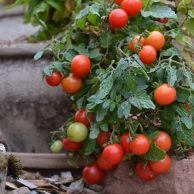

 We’ve got both Hard-neck and Soft-neck varieties! Get your garlic ‘seed’ bulbs NOW for planting from mid-October to mid-November!
We’ve got both Hard-neck and Soft-neck varieties! Get your garlic ‘seed’ bulbs NOW for planting from mid-October to mid-November!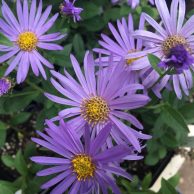 The end of summer doesn’t mean the end to color in the garden, on the contrary, you can plan and plant now for a vibrant wave of color, and habitat for our insects and birds, that continues all the way to hard frost! From native and water-wise perennials and shrubs, to trees (including fruit trees) and grasses, the selection is vast.
The end of summer doesn’t mean the end to color in the garden, on the contrary, you can plan and plant now for a vibrant wave of color, and habitat for our insects and birds, that continues all the way to hard frost! From native and water-wise perennials and shrubs, to trees (including fruit trees) and grasses, the selection is vast. A grove of Rocky Mountain Bee Plant, four to six feet tall, has grown up alongside my driveway, where I almost never water, and is now in its full glory. From dawn to dusk, the buzz of pollinators at work is intense; honeybees, bumblebees large, medium and small, plus sweat bees, hoverflies, little tiny bees and wasps, constantly trading places, collecting pollen and sipping nectar. Yesterday, as I made my way slowly and carefully past the grove to get to my car door, one of the abovementioned made a wrong turn and found herself between my capri pants and my thigh, and panicked. The sting was painful for a few minutes, no big deal, but may have been fatal for the unwitting trespasser.
A grove of Rocky Mountain Bee Plant, four to six feet tall, has grown up alongside my driveway, where I almost never water, and is now in its full glory. From dawn to dusk, the buzz of pollinators at work is intense; honeybees, bumblebees large, medium and small, plus sweat bees, hoverflies, little tiny bees and wasps, constantly trading places, collecting pollen and sipping nectar. Yesterday, as I made my way slowly and carefully past the grove to get to my car door, one of the abovementioned made a wrong turn and found herself between my capri pants and my thigh, and panicked. The sting was painful for a few minutes, no big deal, but may have been fatal for the unwitting trespasser.

 Your Fall Vegetable Garden Starts Here!
Your Fall Vegetable Garden Starts Here!
 The pickling and slicing cucumber starts from Harlequin’s Gardens are now producing a bounty of cucumbers in community gardens! This salad is easy to make and great for a hot summer day!
The pickling and slicing cucumber starts from Harlequin’s Gardens are now producing a bounty of cucumbers in community gardens! This salad is easy to make and great for a hot summer day!
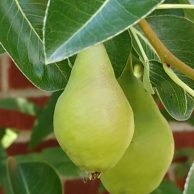 The Environmental Working Group (EWG) publishes an annual ‘Dirty Dozen’ report on toxic residue on non-organic produce, and in the 2024 report
The Environmental Working Group (EWG) publishes an annual ‘Dirty Dozen’ report on toxic residue on non-organic produce, and in the 2024 report  Boulder herbalist and wellness coach Mitten Lowe offers this cooling tea blend. Read more at her website
Boulder herbalist and wellness coach Mitten Lowe offers this cooling tea blend. Read more at her website 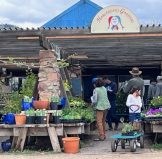 Dear Friends and Fellow Gardeners,
Dear Friends and Fellow Gardeners,



 Fire-wise landscaping should focus on creating a ‘defensible space’ around your home. In “Firewise Plant Materials,” a fact-sheet for the CO Cooperative Extension, F. C. Dennis defines this: “Defensible space is the area between a structure and an oncoming wildfire where nearby vegetation has been modified to reduce a wildfire’s intensity,” and therefore, reduces risk to property.
Fire-wise landscaping should focus on creating a ‘defensible space’ around your home. In “Firewise Plant Materials,” a fact-sheet for the CO Cooperative Extension, F. C. Dennis defines this: “Defensible space is the area between a structure and an oncoming wildfire where nearby vegetation has been modified to reduce a wildfire’s intensity,” and therefore, reduces risk to property. Acantholimon Ready for Sale!
Acantholimon Ready for Sale! It’s officially Summertime. We are struggling with an unprecedented June heat-wave and very low precipitation. But along with the heat, sun and lack of significant rainfall, there are some wonderful things happening that we can appreciate and be grateful for, like the bold, stand-out colors of summer blooms! Of the summer-blooming perennials we grow, both native and non-native, many are in bud or starting to bloom, are looking great and are ready now to bring out for sale. They ALL provide important sustenance for our pollinators, from tiny native bees, wasps and flies, to bumblebees, butterflies, and hummingbirds! And most are in 4” ‘deep pots’, easier to establish in the heat of the summer!
It’s officially Summertime. We are struggling with an unprecedented June heat-wave and very low precipitation. But along with the heat, sun and lack of significant rainfall, there are some wonderful things happening that we can appreciate and be grateful for, like the bold, stand-out colors of summer blooms! Of the summer-blooming perennials we grow, both native and non-native, many are in bud or starting to bloom, are looking great and are ready now to bring out for sale. They ALL provide important sustenance for our pollinators, from tiny native bees, wasps and flies, to bumblebees, butterflies, and hummingbirds! And most are in 4” ‘deep pots’, easier to establish in the heat of the summer! There are plenty of insects that eat plants and these can be damaging. At Harlequin’s we usually recommend supporting plant and soil health, creating diversity and allowing some insect damage before acting. With some pests, it is good to be prepared to act quickly, and sometimes there isn’t a good solution. Even poisons, which we never recommend, can be ineffective.
There are plenty of insects that eat plants and these can be damaging. At Harlequin’s we usually recommend supporting plant and soil health, creating diversity and allowing some insect damage before acting. With some pests, it is good to be prepared to act quickly, and sometimes there isn’t a good solution. Even poisons, which we never recommend, can be ineffective. Welcome to Summer! Experientially, summer began last week with several days of intense heat that were challenging for people, pets, other critters, and plants. But in terms of hours of sunlight, the longest day of the year in the Northern Hemisphere will occur this Thursday, June 20 at 2:50 pm here in Colorado, officially beginning our summer season. Mikl has some thoughts on one of the interesting opportunities the Summer Solstice offers for gardeners with trees and shrubs.
Welcome to Summer! Experientially, summer began last week with several days of intense heat that were challenging for people, pets, other critters, and plants. But in terms of hours of sunlight, the longest day of the year in the Northern Hemisphere will occur this Thursday, June 20 at 2:50 pm here in Colorado, officially beginning our summer season. Mikl has some thoughts on one of the interesting opportunities the Summer Solstice offers for gardeners with trees and shrubs.  With Summer come pest problems. Eggs hatch and spores germinate, and plants are food for all of us folks that don’t photosynthesize. So, what can we do? Share and defend, intelligently.
With Summer come pest problems. Eggs hatch and spores germinate, and plants are food for all of us folks that don’t photosynthesize. So, what can we do? Share and defend, intelligently. We’re celebrating all month, and we’d love to encourage you to support pollinators in your gardens.
We’re celebrating all month, and we’d love to encourage you to support pollinators in your gardens. 
 We finally got a chance to bring out our excellent and unique selection of Native Conifers! Most of them are special dwarf forms that can easily fit in a home garden. These accent plants can give structure and winter interest to elevate your garden design in all seasons.
We finally got a chance to bring out our excellent and unique selection of Native Conifers! Most of them are special dwarf forms that can easily fit in a home garden. These accent plants can give structure and winter interest to elevate your garden design in all seasons. We know that not all of customers live in a house with a yard. Many of you live in apartments or condominiums or townhomes and have only a balcony or a very small patio on which to grow anything outdoors. We would love to help you make the most of your outdoor space, even if it’s tiny.
We know that not all of customers live in a house with a yard. Many of you live in apartments or condominiums or townhomes and have only a balcony or a very small patio on which to grow anything outdoors. We would love to help you make the most of your outdoor space, even if it’s tiny.

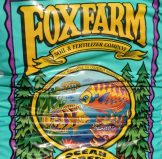
 TERRACOTTA (unglazed, low-fire clay)
TERRACOTTA (unglazed, low-fire clay)

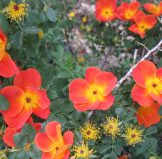
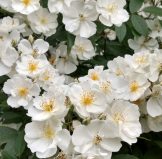
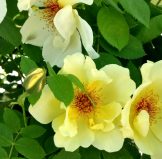
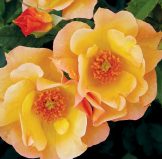
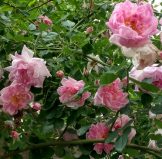
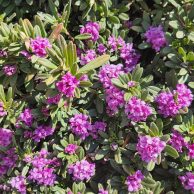
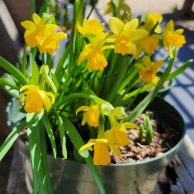 Miss planting bulbs last fall? No worries, we’ve got you covered. Choose from miniature daffodils, chionodoxa, hyacinth, tulips and more.
Miss planting bulbs last fall? No worries, we’ve got you covered. Choose from miniature daffodils, chionodoxa, hyacinth, tulips and more.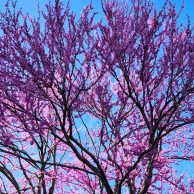 The fields and the foothills are turning green! So many trees are blooming or beginning to leaf out! There is so much energy bursting forth everywhere I look! After the lovely rain last weekend we emerged from our Sunday class to be greeted by the singing of frogs in a big puddle in the parking lot! How can they develop that fast???
The fields and the foothills are turning green! So many trees are blooming or beginning to leaf out! There is so much energy bursting forth everywhere I look! After the lovely rain last weekend we emerged from our Sunday class to be greeted by the singing of frogs in a big puddle in the parking lot! How can they develop that fast???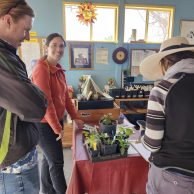
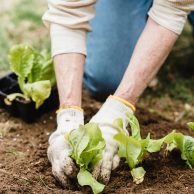 There’s much to do in the garden in April, from finalizing your garden plan, attending to your tools, to the annual spring clean up and pruning and lawn and vegetable garden prep, and PLANTING, DIVIDING and TRANSPLANTING!
There’s much to do in the garden in April, from finalizing your garden plan, attending to your tools, to the annual spring clean up and pruning and lawn and vegetable garden prep, and PLANTING, DIVIDING and TRANSPLANTING!
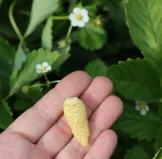
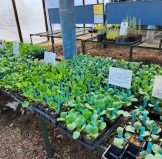 VEGETABLES
VEGETABLES



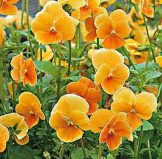
 Lots of Fruit Trees: the best cherries, plums and apples for the Front Range!
Lots of Fruit Trees: the best cherries, plums and apples for the Front Range!